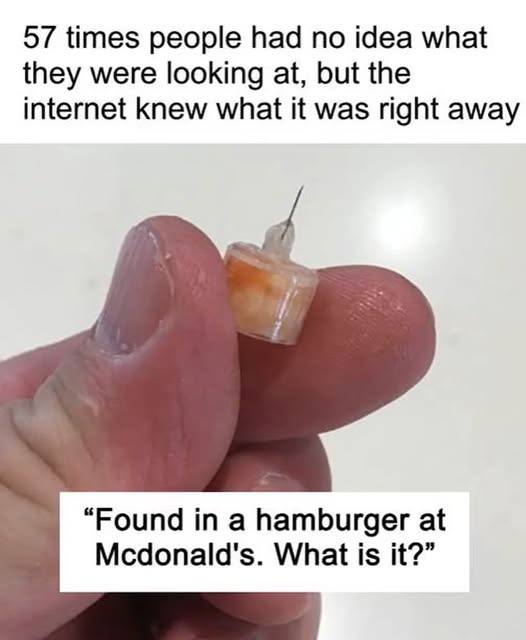The world is full of strange, fascinating things that most of us pass by without a second thought. A rusty tool found in an attic. A perfectly round hole carved into rock. A bizarre metal gadget at a yard sale that looks like it came straight out of a steampunk movie. These small mysteries ignite something universal in people — the urge to ask, What is this thing?
Thanks to the Internet, that question rarely goes unanswered for long.
Online communities like the hugely popular subreddit “What Is This Thing?” have turned everyday curiosity into a global detective game. Millions of users from around the world post photos of odd, unexplained objects they stumble upon — and within hours, an answer almost always emerges. From obscure historical instruments to alien-looking modern tools, the results are equal parts educational and entertaining.
The Internet’s Detective Agency
“What Is This Thing?” isn’t just a thread about weird objects; it’s an ongoing celebration of curiosity and human ingenuity. Someone might upload a photo of a peculiar metal hook found on a hiking trail. Another user — perhaps an engineer or archaeologist — replies within minutes: “That’s an ice cleat for mountain boots, early 20th century.”
Each post becomes a digital puzzle, solved through a blend of expertise and collaboration. Chemists, mechanics, historians, and even hobbyists come together to identify the unknown. It’s crowdsourced problem-solving at its purest form — and it reveals just how much specialized knowledge is floating around the internet, waiting to be shared.
This collective intelligence is often faster than formal institutions. Museums and even police departments have been known to consult the subreddit when faced with unidentified artifacts or suspicious-looking devices. One user once helped identify a decades-old Cold War radiation detector found in a barn. Another cracked the mystery behind a strange underwater formation that turned out to be part of a scientific monitoring station.
In short: the internet may have a lot of noise, but it also has thousands of quiet geniuses who love a good mystery.
From Weird Tools to Nature’s Oddities
Recently, Bored Panda compiled 57 of the most fascinating, bizarre, and mind-bending discoveries from the subreddit — a greatest hits list of mystery objects and their often unexpected explanations.
The range is wild. There’s the strange bathroom door that looks like it belongs in a spaceship (it turned out to be a specialized airlock for a cleanroom). The shiny metal cylinder mistaken for a bomb (actually a marine depth sensor). The perfectly round holes found in sand dunes (made by burrowing beetles).
Some finds are historical treasures. A “weird metal tube with teeth” was identified as a 19th-century cigar punch. A brass contraption found in a drawer turned out to be a Victorian-era sewing aid. An odd, hand-carved stone ring wasn’t decorative at all — it was part of an ancient tool used for shaping leather.
Each solved mystery tells a story — not just about the object itself, but about how knowledge endures across time. A person in Canada posts a strange artifact their great-grandfather owned, and someone in Sweden instantly recognizes it because they’ve seen the same thing in a museum. That’s how digital archaeology happens in real time.
A Digital Classroom Without Walls
What makes communities like this fascinating isn’t just the answers — it’s the collaboration behind them. People don’t show off; they share. The tone is rarely condescending, even when questions are simple. “That’s a banana hook,” one commenter might say, or “That’s actually a fuel line clip from a 2003 Honda Civic.” And then, inevitably, someone else chimes in with a story about how they once used one, or why it was designed that way.
It’s a humble reminder of something the internet often forgets: we don’t know everything, and that’s okay. The joy is in finding out together.
Anthropologists say this form of communal problem-solving taps into something deeply human. From ancient campfires to modern subreddits, people have always gathered to interpret the unknown — whether it’s strange stars in the sky or a weird object in a junk drawer. The curiosity that once drove explorers and inventors now fuels a digital scavenger hunt.
When the Answer Is Stranger Than the Object
Sometimes, the explanations themselves are more fascinating than the objects. A mysterious glass ball found in a backyard? It turned out to be a WWII-era Japanese fishing float, used to keep nets afloat in the Pacific. A bizarre handheld device that looked like a sci-fi weapon? A vintage hair curler.
Then there are moments of pure wonder. One user uploaded a photo of what looked like a black hole in the clouds — a perfect circular gap in the sky. Meteorologists jumped into the comments to explain it was a “fallstreak hole,” caused when ice crystals in the atmosphere suddenly evaporate. Nature, it turns out, creates some of the strangest “objects” of all.
And sometimes, the mystery stays unsolved. A few posts end without a clear conclusion — a reminder that not everything can be explained right away. For many users, that’s part of the thrill. The unknown keeps the community alive.
Curiosity in the Age of Answers
In a world where information is a click away, you might think mystery would be disappearing. But it’s the opposite. As technology expands our reach, it also exposes more of what we don’t know — and communities like “What Is This Thing?” exist to fill that gap.
It’s not just about identifying stuff; it’s about reconnecting with the act of wondering. That’s why people scroll through lists like “57 Mysterious Objects That Left People Completely Baffled.” It’s not just fun trivia — it’s a modern version of exploration.
Each post, each photo, is a small reminder that discovery doesn’t always happen in laboratories or jungles. Sometimes it happens in a garage, on a hiking trail, or in a thrift store aisle. Sometimes it starts with a person holding an unfamiliar thing and saying, “Does anyone know what this is?”
The Joy of Shared Discovery
These online detectives prove that curiosity is contagious. One user’s confusion becomes another’s opportunity to teach. A mechanical engineer identifies a gear, a chemist explains residue, a historian recognizes a relic — and suddenly, strangers are connected across continents through a single object.
In an era defined by division, this small act of collaboration feels revolutionary. No politics. No arguments. Just humans helping each other learn.
The community has grown so large that moderators now organize posts into categories: “Tool,” “Nature,” “Art,” “Technology,” “Mystery Solved.” Each solved mystery adds to a collective archive of human knowledge — a constantly growing museum of the weird and wonderful.
For those who browse it daily, it’s addictive. “I go there just to feel like the world is still magical,” one frequent commenter wrote. “Every day someone finds something I’ve never seen before — and every day, someone else knows exactly what it is.”
The Wonder Beneath the Ordinary
At its heart, the fascination with mysterious objects isn’t really about the things themselves. It’s about rediscovering awe in a world that often feels predictable.
The next time you stumble upon a strange metal hook, an unmarked key, or a small object that seems to have no purpose — remember, it probably has a story. And somewhere online, a thousand strangers are ready to help you tell it.
Because no matter how advanced technology becomes, one truth never changes: we are a species built to wonder. And every time we ask, What is this thing?, we reconnect with that timeless spark — the same curiosity that’s kept us learning, building, and discovering for centuries.
So go ahead — open that old box in the attic. Post that photo of the weird tool in your garage. Somewhere out there, someone knows the answer. And if they don’t? Well, that’s just another mystery waiting to be solved.


